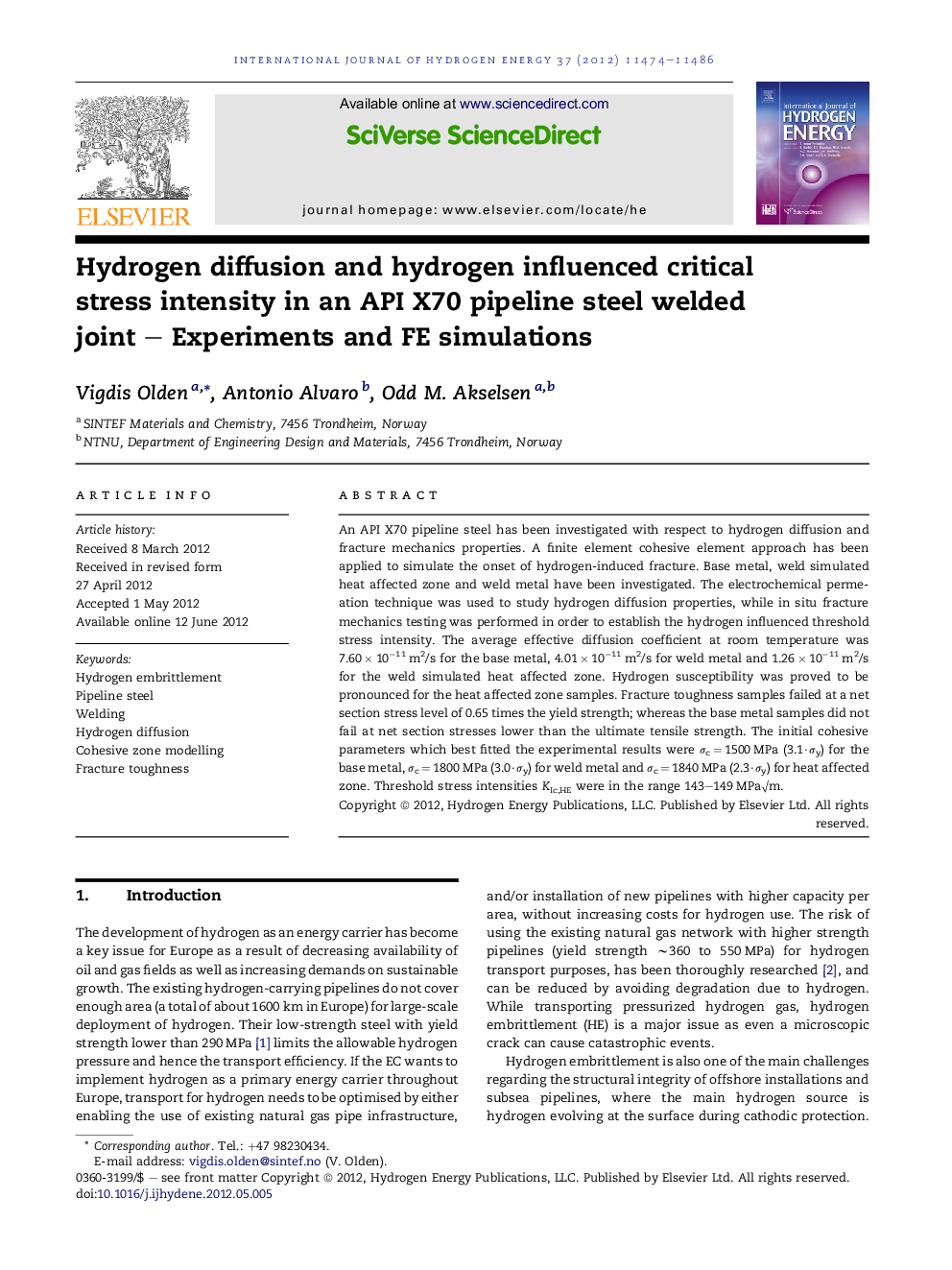| Article ID | Journal | Published Year | Pages | File Type |
|---|---|---|---|---|
| 1276311 | International Journal of Hydrogen Energy | 2012 | 13 Pages |
An API X70 pipeline steel has been investigated with respect to hydrogen diffusion and fracture mechanics properties. A finite element cohesive element approach has been applied to simulate the onset of hydrogen-induced fracture. Base metal, weld simulated heat affected zone and weld metal have been investigated. The electrochemical permeation technique was used to study hydrogen diffusion properties, while in situ fracture mechanics testing was performed in order to establish the hydrogen influenced threshold stress intensity. The average effective diffusion coefficient at room temperature was 7.60 × 10−11 m2/s for the base metal, 4.01 × 10−11 m2/s for weld metal and 1.26 × 10−11 m2/s for the weld simulated heat affected zone. Hydrogen susceptibility was proved to be pronounced for the heat affected zone samples. Fracture toughness samples failed at a net section stress level of 0.65 times the yield strength; whereas the base metal samples did not fail at net section stresses lower than the ultimate tensile strength. The initial cohesive parameters which best fitted the experimental results were σc = 1500 MPa (3.1·σy) for the base metal, σc = 1800 MPa (3.0·σy) for weld metal and σc = 1840 MPa (2.3·σy) for heat affected zone. Threshold stress intensities KIc,HE were in the range 143–149 MPa√m.
► Hydrogen diffusion and fracture toughness in hydrogen are tested for X70 steel. ► Laboratory experiments and finite element simulations are performed. ► The cohesive zone approach is applied to simulate the onset of hydrogen fracture. ► Base metal and weld metal have marginal susceptibility to hydrogen embrittlement. ► The heat affected zone is clearly embrittled by hydrogen.
